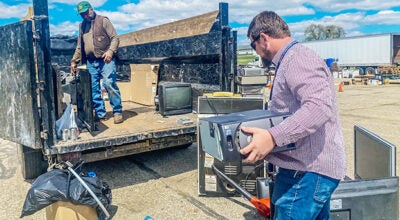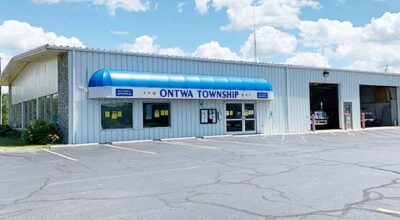District Library facing budget challenges
Published 7:34 pm Thursday, November 18, 2010

Salvador Ramos, a student at Southwestern Michigan College, surfs the Internet at the Niles District Library computer lab. The 18 computers in the lab will be moved to the current local history room. The local history materials will be moved to an open area near the information desk. They are changes that are necessary to reduce personnel costs at the library. (File photo)
Increased expenses and a dip in revenues are going to lead to some significant changes at the Niles District Library in the coming months.
Library Director Nancy Studebaker said reductions in state aid, the elimination of the single-business tax and a dwindling tax base have meant a struggle to balance recent budgets.
Studebaker doesn’t expect an increase in state aid any time soon, but what is more troubling is the tax base situation.
“This is the first year that our upcoming assessment will be less than it was last year,” she said. “That is a trend that we really have to watch. We’ll have serious financial problems if it continues.”
Expenses have exceeded revenues in two of the past three actual fiscal years, making it a priority to come up with a balanced budget in 2012, according to Studebaker.
By balancing the budget now, the library board hopes to avoid the type of crisis that has led to closings and reductions in hours at libraries across the country in recent years.
At the Oct. 19 board meeting, the members agreed to some cost-saving measures proposed by Studebaker.
Those include moving the local history room collection and services into an open area near the information desk and to move the computer lab into the vacated history room space.
These moves will allow the library to reduce adult services staff by 40 hours per week and computer staff by 30 hours per week, thus saving $40,000 in personnel costs.
Studebaker said the goal is to make the changes by no later than March 2011.
The board will also explore the possibility of offering an early retirement incentive program to cut costs in personnel.
“It was clear looking at the budget that personnel is where we were going to have to look because it’s such a big portion of the budget,” Studebaker said. “We had to look at ways where we could be more efficient with our use of staff. This is one way to do that.”
Studebaker said some library users have expressed concerns about the move of the history room, specifically the security of some of the rare items the library owns.
“We are well aware and appreciate the value of those items,” she said, adding that some of the items will be kept locked up.
The changes will also increase the availability of the local history and genealogy collection from 40 hours per week to the entire time the library is open.
The move comes after the library made upgrades to heating and cooling equipment in 2009 that have reduced utility costs by $12,000 annually.
While the library continues to struggle financially, library usage has been on the rise for the past six years, according to Studebaker.
Circulation increased 1.6 percent the past fiscal year, and the total circulation has risen by more than 30,000 items since fiscal year 2002.
“In general public libraries get more usage during down economic times,” Studebaker said.
Because of that, avoiding cutting funding for materials is a priority for the library.
“The materials are directly tied to our ability to fulfill our mission,” Studebaker said. “So we deeply want to maintain our expenditures on materials.”






